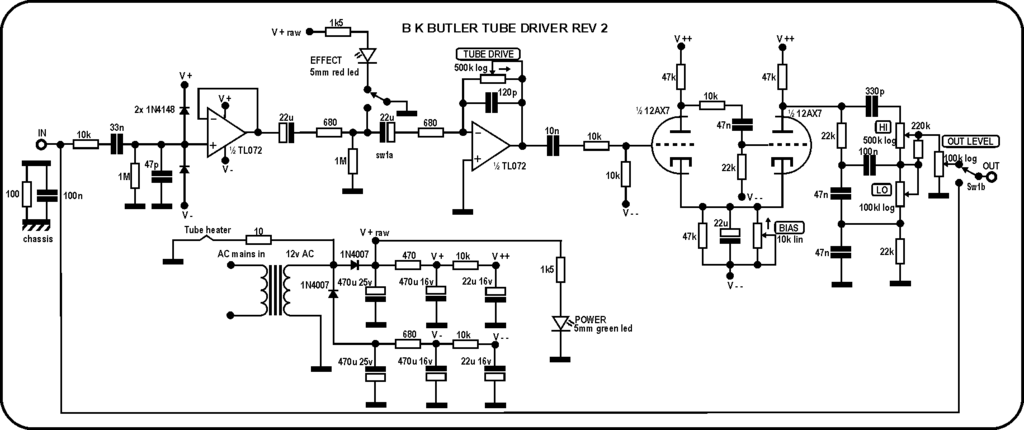
I have seen other (lesser) hacks at the circuit designed to run on 9V supply (such as this) but that doesnt run the tube at proper filament voltage, nor does it supply the 24V rail to rail supply for the tube. My thought was to modify the design for a 12VDC supply. 12VDC filaments, and then use a charge pump to create 24VDC*. Instead of running the tube at +/- 12VDC, i'd run it at 24VDC with the cathodes referenced to ground. A voltage divider is also used to provide a ~12V VR for the op-amp. Schematic like so:

The design works but i'm having low output problems. I know the BK units dont have a whole lot of boost, but this one is pretty much at unity gain when maxed out. I tried adding a second doubler on the charge pump for ~36V and that helped a bit but it was still pretty low output. Is there something i'm missing here? I presumed the +24V rail would be functionally the same as +/- 12V rails, but maybe i'm wrong on that?
*I realize that I could have used the charge pump to generate +/- 12V, but I didnt on this iteration. Humor me.

